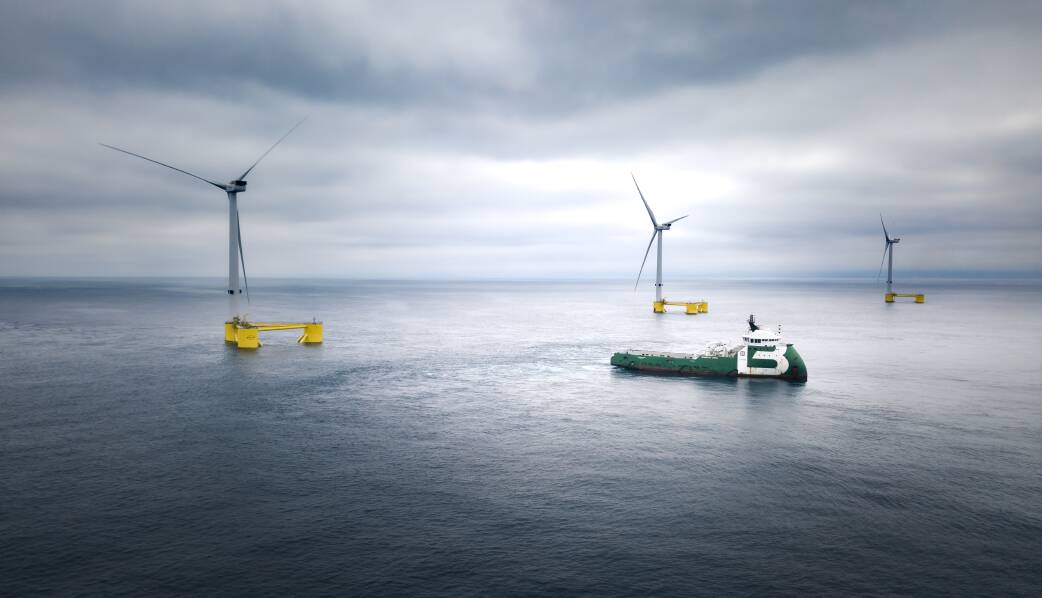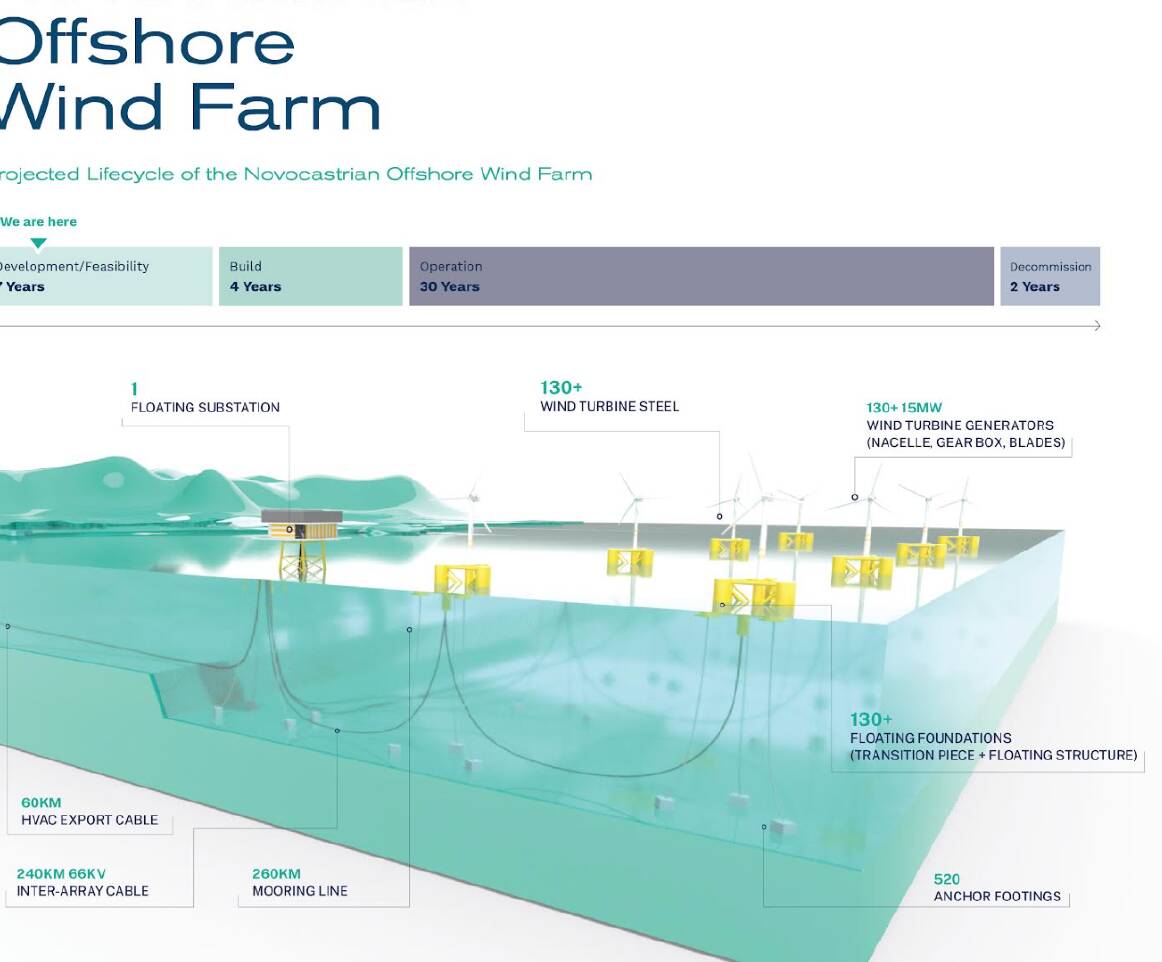
Wind farms off the coast of Newcastle moved a step closer to reality last week when the federal government listed the Hunter as one of six preferred sites for the technology.
Parliament passed legislation last year giving the energy minister the power to grant licences for offshore wind farms in declared areas.
The Hunter ranked second on the government's list of suitable sites behind Gippsland in Victoria, putting the region near the forefront of what could be a multibillion-dollar transformation in how the nation generates electricity.
As the Hunter's coal-fired power stations rapidly come to the end of their working life, the need for new, reliable energy becomes increasingly pressing.
Today the Newcastle Herald takes a look at what offshore wind farms are and how they could change the Hunter coastline and the region's economy.
Who is planning them?
A company called Oceanex Energy has one of the most advanced plans for offshore power generation in the Hunter. It calls its project the Novocastrian Offshore Wind Farm.
The Australian firm is working on plans for five offshore farms in Australia (Newcastle, Illawarra, Ulladulla, Eden, Bunbury) and three in New Zealand.
Spanish company BlueFloat Energy is partnering with Energy Estate on its Hunter Coast Offshore Wind Project.
Five other groups have proposed wind farms off Newcastle.
Where would they be built?
The Oceanex farm is proposed for 30 kilometres off the coast of Newcastle, though it has not publicly identified its preferred area.
BlueFloat's proposed project area stretches offshore from Belmont to Tuggerah.
The proponents hope the government soon will declare a Hunter wind farm zone in Commonwealth waters possibly stretching from Port Stephens to the Central Coast.
Proponents will apply for licences to study project areas of up to 700 square kilometres within that broader zone.
The players in the industry anticipate two or three proposals could progress from feasibility to construction in the Hunter zone.
How big are they?
The Oceanex proposal is for about 130 floating turbines, each 250 metres high and tethered to the ocean floor with cables.
Sydney's Centrepoint Tower is 300 metres high.
The towers supporting the blades of the turbines are 130 metres above sea level, and the blades stretch another 120 metres above that.
Will you be able to see the turbines from shore?
Yes, but just how prominent they will be remains unclear.
Oceanex spokesman Andy Evans says someone standing on shore would "only see the very tip of a blade on the very clearest of days".
BlueFloat has published a visual simulation of its Gippsland proposal in Victoria which shows towers and blades clearly visible from shore, but these are planted in the ocean floor in much shallower water closer to the coast.

When could they be up and running?
Oceanex says it could start building its project in 2028 and start producing power in 2030.
That schedule corresponds with the government's timeframe for offshore wind.
The government plans to start community consultation on a Newcastle wind farm in the next few months.
How does the electricity get back to shore?
Each turbine feeds power to an offshore substation, which is connected to land by sub-sea cables, which in turn connect to the Hunter's established electricity grid.
How much power will they generate?
Oceanex is aiming to build a wind farm able to generate up to 2000 megawatts of electricity, roughly equivalent to the Hunter's Liddell coal-fired power station when it was operating at full capacity.
The BlueFloat proposal is for a 1400MW farm.
What can the power be used for?
Oceanex says its proposed wind farm could power 1.2 million homes and supply roughly 10 per cent of the state's electricity needs.
A Hunter wind farm could also power established local industries and future clean energy production, notably green hydrogen.

How much will they cost?
The Oceanex proposal is estimated to cost at least $8 billion.
One of the criticisms of offshore wind is that it is expensive to build and maintain.
Only three floating wind farms are in operation across the globe, two in Scotland and one off the coast of Portugal, and the largest of these has five turbines producing a total of 50 megawatts.
Will wind farms affect shipping?
Oceanex says it is in the process of assessing how its project would operate in proximity to shipping lanes. The company points to the fact that turbines operate in the busy North Sea.
The government will have plenty to say on this issue, no doubt.
The wind farms' impact on whale migration passages will also be an issue as the projects progress.
Why Newcastle?
The Hunter has a well established electricity network due to its history of generating much of the state's power.
It also has an established workforce and industry with experience in large-scale engineering and maintenance projects.
The port has deep-water access and space for related manufacturing, transport and warehousing operations.
What's in it for us?
Apart from the environmental benefits of producing clean energy, wind farms could generate hundreds or even thousands of jobs and cement the Hunter as the state's energy engine room.
Oceanex says its turbines will generate 3000 construction and 300 ongoing jobs.
It is also possible, though not confirmed, that Newcastle could help manufacture parts of the turbines, including the towers.
Other potential supply chain opportunities include engineering, surveying, warehousing, ship building and maintenance, research and development.
Hundreds of land-based wind turbines have been imported through Newcastle harbour already.
WHAT DO YOU THINK? We've made it a whole lot easier for you to have your say. Our new comment platform requires only one log-in to access articles and to join the discussion on the Newcastle Herald website. Find out how to register so you can enjoy civil, friendly and engaging discussions. Sign up for a subscription here.







